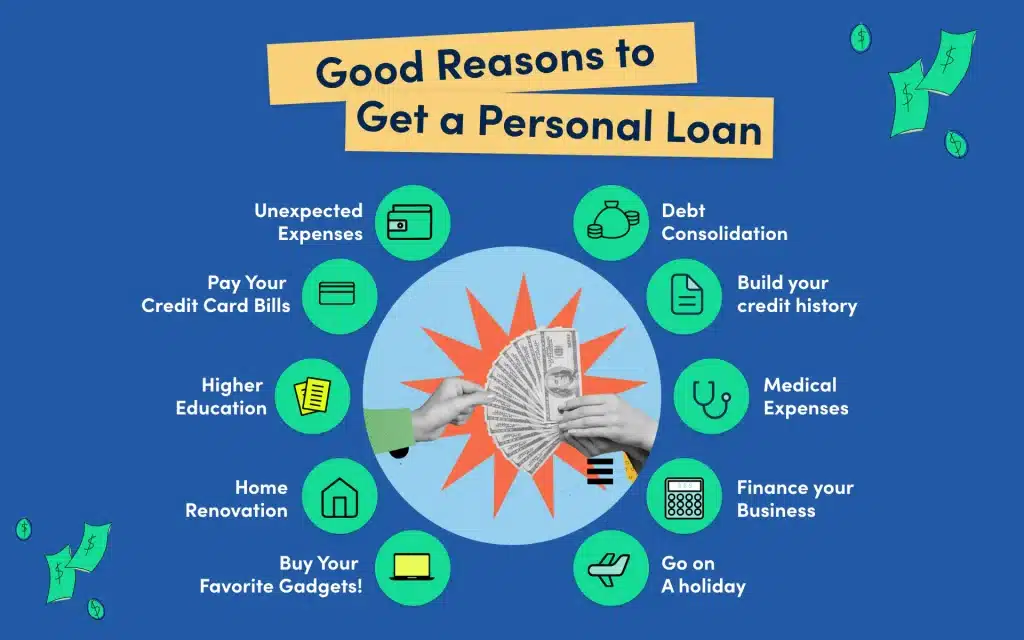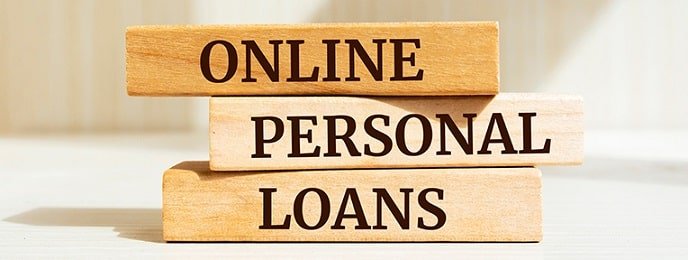Personal loans can be a lifeline when you need extra funds for significant purchases, debt consolidation, or unexpected expenses. Whether you’re planning to renovate your home, pay off credit card debt, or finance a large purchase, a personal loan might be your best option. However, before diving into the loan process, it’s essential to understand how the application process works. This guide will take you through each step of applying for a personal loan, from gathering necessary documents to getting approval and managing your loan repayments.
Key Takeaways:
- Know Your Needs: Assess how much you need to borrow and evaluate your ability to repay the loan.
- Compare Lenders: Shop around for the best interest rates, fees, and terms.
- Prepare Your Documents: Gather necessary paperwork to speed up the application process.
- Review Loan Terms: Make sure you fully understand the loan terms, fees, and repayment schedule.
- Repay on Time: Timely repayment will help protect your credit score and financial health.
Understanding Personal Loans

A personal loan is a type of unsecured loan, meaning it doesn’t require any collateral, like a home or car, to be approved. Lenders offer personal loans based on your creditworthiness, income, and other financial factors. Personal loans can be used for a variety of reasons, such as debt consolidation, medical bills, home improvements, or even wedding expenses.
A personal loan is a type of unsecured loan that individuals can use for a variety of purposes, such as debt consolidation, home improvements, medical expenses, or significant purchases. Unlike secured loans, such as mortgages or car loans, a personal loan does not require any collateral. Instead, the loan is based on the borrower’s creditworthiness, income, and financial history. In this section, we will break down the key aspects of personal loans to help you understand how they work and what factors to consider before applying.
What Is a Personal Loan?
A personal loan is a fixed amount of money borrowed from a financial institution, such as a bank, credit union, or online lender. Personal loans are typically unsecured, meaning they are not backed by any collateral (such as a home or vehicle). The amount of money you can borrow usually ranges from $1,000 to $50,000 or more, depending on the lender and your financial profile.
Once you receive the loan, you repay it in fixed monthly installments over a set term, typically ranging from 2 to 7 years. The interest rate applied to the loan is determined by factors such as your credit score, income, and debt-to-income ratio.
Types of Personal Loans

Personal loans come in various types, each designed for different purposes. Here are the most common types:
Debt Consolidation Loans
A debt consolidation loan allows you to combine multiple debts (e.g., credit card balances, medical bills) into a single loan. This can help simplify your payments by consolidating everything into one monthly payment. Debt consolidation loans often come with lower interest rates than credit cards, making them a popular choice for people looking to save money on interest.
Medical Loans
Medical loans are personal loans specifically designed to cover medical expenses, whether for an emergency, elective procedures, or ongoing treatments. Medical loans may offer favorable interest rates or promotional offers for medical expenses.
Home Improvement Loans
A home improvement loan can help fund major repairs, renovations, or upgrades to your home. These loans may come with flexible terms, and the funds can be used for anything from adding a new kitchen to improving your landscaping.
Wedding Loans
Many people opt for personal loans to cover wedding expenses, including the venue, catering, photography, and attire. Wedding loans are unsecured loans, meaning you don’t need to put your property at risk to get the funds.
Student Loans and Education Loans
Although education loans are often specific to tuition fees, some lenders offer personal loans that can be used for educational expenses, such as paying for textbooks, living expenses, and more. Personal loans for education may have terms similar to regular personal loans.
How to Qualify for a Personal Loan
To qualify for a personal loan, lenders will evaluate various factors to determine your ability to repay the loan. These factors typically include:
Credit Score
Your credit score plays a major role in determining whether you qualify for a personal loan and what kind of interest rate you will receive. Lenders typically use your credit score to assess the risk of lending to you. A higher credit score indicates that you have a strong history of managing debt, making you more likely to get approved for a loan with a lower interest rate.
- Excellent Credit (750 and above): You’ll likely qualify for the best interest rates and loan terms.
- Good Credit (700–749): You’ll still receive favorable rates, but they may not be the lowest.
- Fair Credit (650–699): You may still qualify for a personal loan, but your interest rates will likely be higher.
- Poor Credit (below 650): Qualifying for a personal loan may be difficult, and if you do qualify, expect high-interest rates.
Income and Employment History
Lenders will want to ensure that you have a stable income and the ability to repay the loan. Typically, lenders require proof of employment, such as pay stubs or tax returns, to verify your income. Self-employed individuals may need to provide additional documentation, like bank statements or profit and loss statements.
Debt-to-Income Ratio
Your debt-to-income (DTI) ratio is the percentage of your monthly income that goes toward paying off existing debt. Lenders generally prefer a DTI ratio of 36% or lower. A lower DTI indicates that you’re managing your debts well and have the capacity to take on new debt responsibly.
Employment and Financial Stability
Lenders will also consider the length of time you’ve been employed and your overall financial stability. Having a steady job and a stable income can improve your chances of securing a loan.
Pros and Cons of Personal Loans

Like any financial product, personal loans come with both advantages and disadvantages. Below are some of the key pros and cons to consider:
Pros:
- Fixed Payments: With a personal loan, you know exactly how much to pay each month, making it easier to budget.
- No Collateral: Since personal loans are unsecured, you don’t need to put up property as collateral.
- Flexible Use: You can use personal loans for almost anything, from consolidating debt to funding a wedding or home improvement project.
- Quick Approval: Personal loans can often be approved and disbursed relatively quickly, especially with online lenders.
Cons:
- Higher Interest Rates for Bad Credit: If you have poor credit, you may face high-interest rates, making the loan more expensive.
- Fees: Some lenders charge origination fees, late fees, or prepayment penalties.
- Short-Term Commitment: While personal loans typically have a repayment period of 2-7 years, the short-term nature of the loan may result in higher monthly payments.
Key Features of Personal Loans

Several features make personal loans appealing to borrowers. These include:
Fixed Loan Amount
The loan amount is determined at the time of approval and is typically disbursed as a lump sum. Unlike lines of credit (such as credit cards), you receive the entire loan upfront, and the repayment terms are structured accordingly.
Personal loans typically range from $1,000 to $50,000 or more, depending on the lender and your financial qualifications.
Fixed Interest Rates and Payments
One of the most attractive features of personal loans is their fixed interest rate. Fixed rates mean that your interest rate remains the same for the life of the loan, giving you predictability with monthly payments. Fixed payments make it easier to budget, as your payments will remain constant over time.
Unsecured Loan
As mentioned earlier, personal loans are typically unsecured, meaning they do not require any collateral. This is an advantage for borrowers who do not want to risk their property. However, the lack of collateral often means that lenders charge higher interest rates, particularly if the borrower has a lower credit score.
Loan Term
The term of a personal loan refers to the amount of time you have to repay the loan. Personal loan terms typically range from 2 years to 7 years. Shorter-term loans generally have higher monthly payments but result in lower overall interest costs. Longer-term loans may have smaller payments but can lead to paying more in interest over time.
Flexibility in Use
Personal loans are generally versatile and can be used for a wide range of purposes. You can use the funds for anything from consolidating high-interest debt to covering medical bills, financing home improvements, or even paying for a wedding. However, some lenders may restrict the loan’s use to specific purposes, such as home repairs or business expenses.
Repayment Terms: These loans are usually paid back in fixed monthly payments over 2 to 7 years.
Interest Rates: Personal loan interest rates can vary significantly, typically ranging from 6% to 36%, depending on your credit history and financial profile.
Step-by-Step Personal Loan Application Process

The process of applying for a personal loan can seem overwhelming, but it can be broken down into manageable steps. By understanding each phase, you can make informed decisions that lead to better loan terms and successful approval.
Step 1: Assess Your Financial Situation
Before applying for a personal loan, it’s essential to evaluate your finances. This means understanding how much you need to borrow, what you can afford to repay monthly, and whether you’re eligible for the loan amount you seek.
- Determine the Loan Amount: Calculate how much money you need, and ensure that the loan amount fits your budget. Borrowing too much may lead to higher monthly payments, while borrowing too little may not cover your needs.
- Evaluate Your Debt-to-Income (DTI) Ratio: Your DTI ratio is a critical factor in determining your eligibility for a personal loan. It compares your total monthly debt payments to your gross monthly income. Lenders prefer a DTI ratio of 36% or lower.
- Check Your Credit Score: Your credit score plays a significant role in whether you get approved for a loan and at what interest rate. A higher credit score generally leads to more favorable terms, such as a lower interest rate.
Step 2: Shop Around for Lenders
Not all personal loan lenders are created equal. Different lenders offer different loan terms, interest rates, fees, and eligibility requirements. You’ll want to compare multiple lenders to ensure you get the best deal possible.
- Banks and Credit Unions: Traditional banks and credit unions are some of the most common lenders. They may offer competitive rates for customers with good credit.
- Online Lenders: Many online lenders offer personal loans with fast approval processes and competitive rates. Online lenders tend to have less stringent eligibility requirements compared to traditional banks.
- Peer-to-Peer Lenders: Peer-to-peer (P2P) lenders match borrowers with individual investors who fund the loan. These lenders may offer lower rates, but it’s important to review their reputation and customer service.
When shopping for lenders, consider the following factors:
- Interest Rates: Compare interest rates across different lenders to find the most affordable loan option.
- Loan Terms: Look for flexible repayment terms that fit your budget.
- Fees and Charges: Some lenders charge origination fees, late payment fees, or prepayment penalties. Be sure to account for these costs when comparing loan offers.
- Customer Service: Choose a lender with a good reputation for customer service. Read reviews and check their responsiveness.
Step 3: Gather Required Documents
Once you’ve identified a lender and loan offer, the next step is gathering the necessary documents to complete the application. Lenders will require certain documentation to assess your eligibility and determine your loan terms.
Common documents required for a personal loan application include:
- Proof of Identity: A valid government-issued ID, such as a passport or driver’s license.
- Proof of Income: Recent pay stubs, tax returns, or bank statements that show your income.
- Proof of Employment: A recent pay stub or employment verification letter.
- Credit History: Your credit report may be pulled by the lender to assess your creditworthiness.
- Address Verification: A utility bill, lease agreement, or bank statement that shows your current address.
Having these documents ready will streamline the application process and reduce the likelihood of delays.
Step 4: Submit Your Application
With all necessary documents gathered, you can now submit your loan application. Depending on the lender, you may submit your application online, in person, or over the phone.
During the application, you’ll need to provide personal information, including:
- Full name, address, and contact details
- Social Security Number (SSN)
- Employment and income details
- Desired loan amount and term
Be honest and accurate when providing this information, as any inconsistencies could lead to delays or denials.
Step 5: Wait for Approval
After submitting your application, the lender will review your information and determine whether to approve or deny your loan request. This process can take anywhere from a few minutes to a few days, depending on the lender and the complexity of your application.
- Soft vs. Hard Credit Inquiry: Many lenders conduct a soft credit inquiry (which doesn’t impact your credit score) when pre-approving your loan. A hard credit inquiry (which may temporarily impact your credit score) will occur when the lender makes a final decision on your loan application.
- Loan Approval and Terms: If you’re approved, the lender will provide you with the loan terms, including the interest rate, repayment schedule, and any fees. Be sure to carefully review these terms before accepting the loan offer.
Step 6: Sign the Loan Agreement
Once you’ve reviewed and accepted the loan terms, you’ll need to sign the loan agreement. This is a legally binding contract that outlines your obligations and the lender’s responsibilities.
Before signing, make sure you understand:
- The interest rate and repayment schedule
- The loan term and total cost of the loan
- Any fees or charges, such as origination fees or prepayment penalties
- Any consequences for missed or late payments
Signing the agreement means you agree to the terms and are committed to repaying the loan as outlined.
Step 7: Receive the Loan Funds
After you’ve signed the loan agreement, the lender will disburse the loan funds. Depending on the lender, the funds may be deposited directly into your bank account within a few business days. In some cases, you may receive a check or have the funds sent to the vendor if you’re using the loan for a specific purpose (such as paying for a home improvement project).
Step 8: Repay the Loan
Now that you’ve received your loan funds, it’s time to begin making payments. Personal loan typically have fixed monthly payments, which can be set up through automatic withdrawals from your bank account.
Be sure to:
- Make payments on time: Late payments can result in fees, increased interest rates, and damage to your credit score.
- Consider paying extra: If possible, make additional payments toward the principal balance. This can help you pay off the loan faster and save on interest.
Also Read : Personal Loan Refinance: Tips For Finding The Best Rates And Terms
Conclusion
The personal loan application process can seem complex at first, but breaking it down step by step can make it more manageable. By understanding the process, comparing different lenders, and carefully reviewing the loan terms, you can secure the best loan for your needs. The key to a successful loan application lies in preparation—ensure you have the necessary documents ready, understand your financial situation, and choose the right lender for your needs.
Personal loans can be a helpful financial tool, but it’s important to approach the process carefully to ensure you’re getting the best deal possible. With this guide, you are now equipped with the knowledge to navigate the personal loan application process confidently.
FAQs
What credit score do I need to qualify for a personal loan?
Most lenders require a credit score of at least 600-650 to qualify for a personal loan, but better rates are available for scores of 700 or higher.
Can I apply for a personal loan with bad credit?
Yes, some lenders specialize in offering personal loans to borrowers with bad credit. However, you may face higher interest rates and fees.
How long does it take to get approved for a personal loan?
Approval times vary by lender. Some online lenders offer quick approval in as little as a few minutes, while traditional banks may take several days.
What is the maximum loan amount I can apply for?
Loan amounts vary by lender but generally range from $1,000 to $50,000 or more. Your loan eligibility will depend on factors like income, credit score, and debt-to-income ratio.
Can I get a personal loan if I’m self-employed?
Yes, self-employed borrowers can apply for personal loans, but they may need to provide additional documentation, such as tax returns or bank statements, to verify their income.
Are there fees for applying for a personal loan?
Some lenders charge an origination fee or processing fee for personal loans. Be sure to review these fees before accepting a loan offer.
Can I use a personal loan for anything?
Personal loans are generally flexible and can be used for various purposes, including debt consolidation, home improvement, medical bills, or even a vacation. However, it’s important to confirm with the lender if there are any restrictions.




